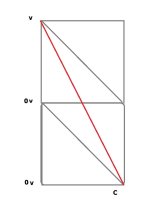e-beach
10 MW
Hwy89 said:Ah, but Kleiner is taking 3 million shares of Zenn Motors stock as part of the deal. Since Zenn's only asset is its partial ownership and marketing agreement with EEstor, Kleiner must think that there is still somthing there.
Been following this saga since 2008 and hope to live long enough to see if Dick Wier turns out to be a genius or a con artist.
Full disclosure; have bought and sold Zenn stock hundreds of times and am actually a little ahead. Currently hold 3K shares.
Hummmm.....Kleiner Perkins is a shrewd mover. Maybe it's cheaper to own Zenn then EEstor there-by getting more assets for the dollar?......
BTW, glad you are ahead on the deals.



